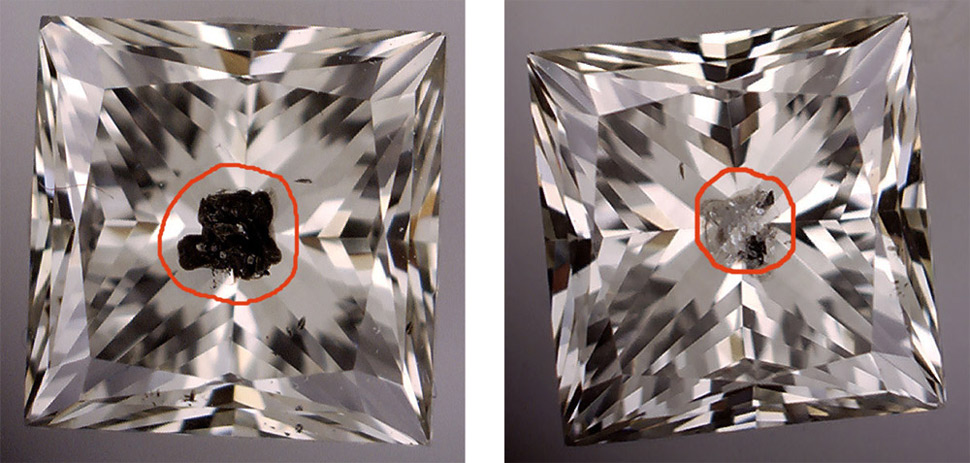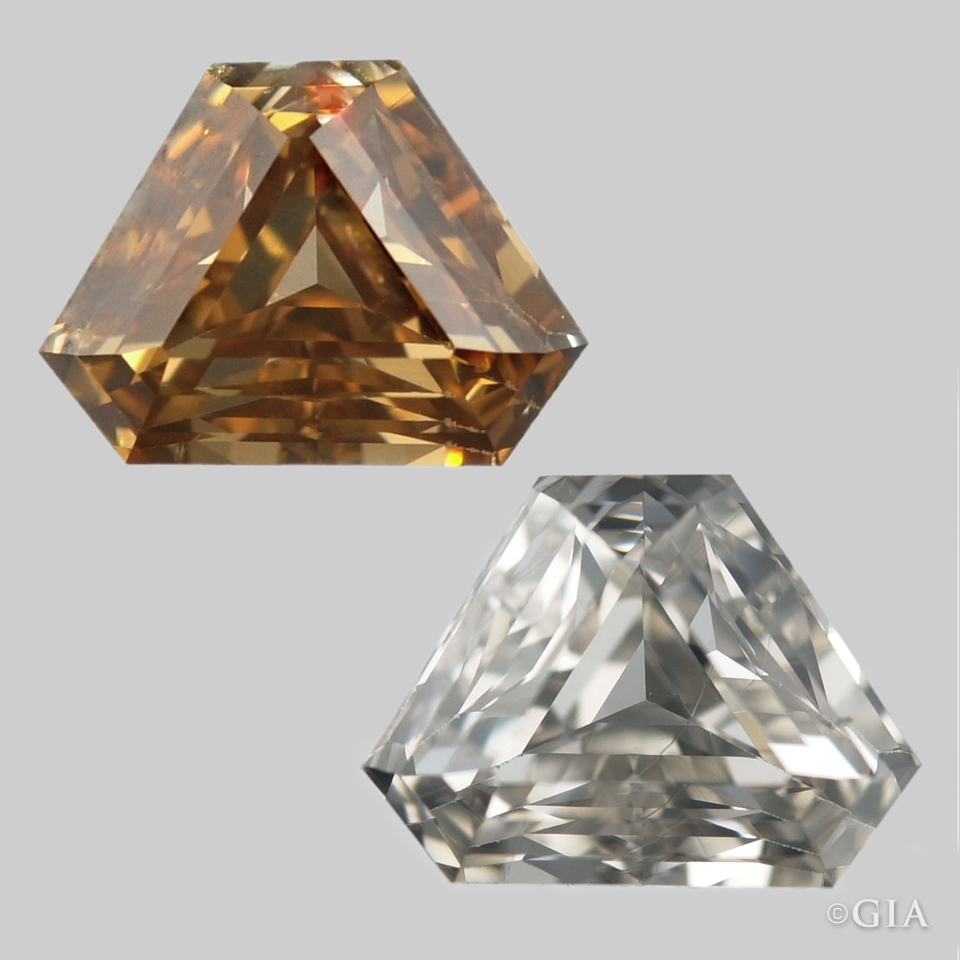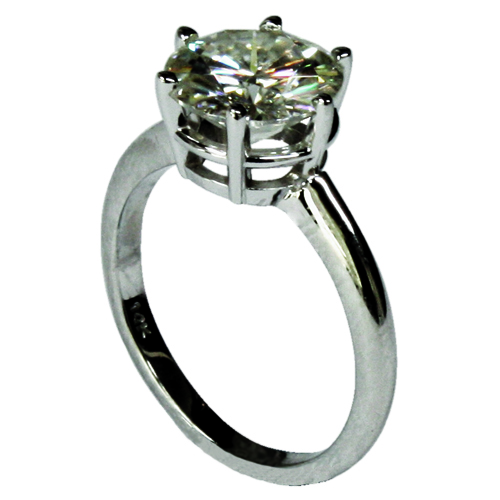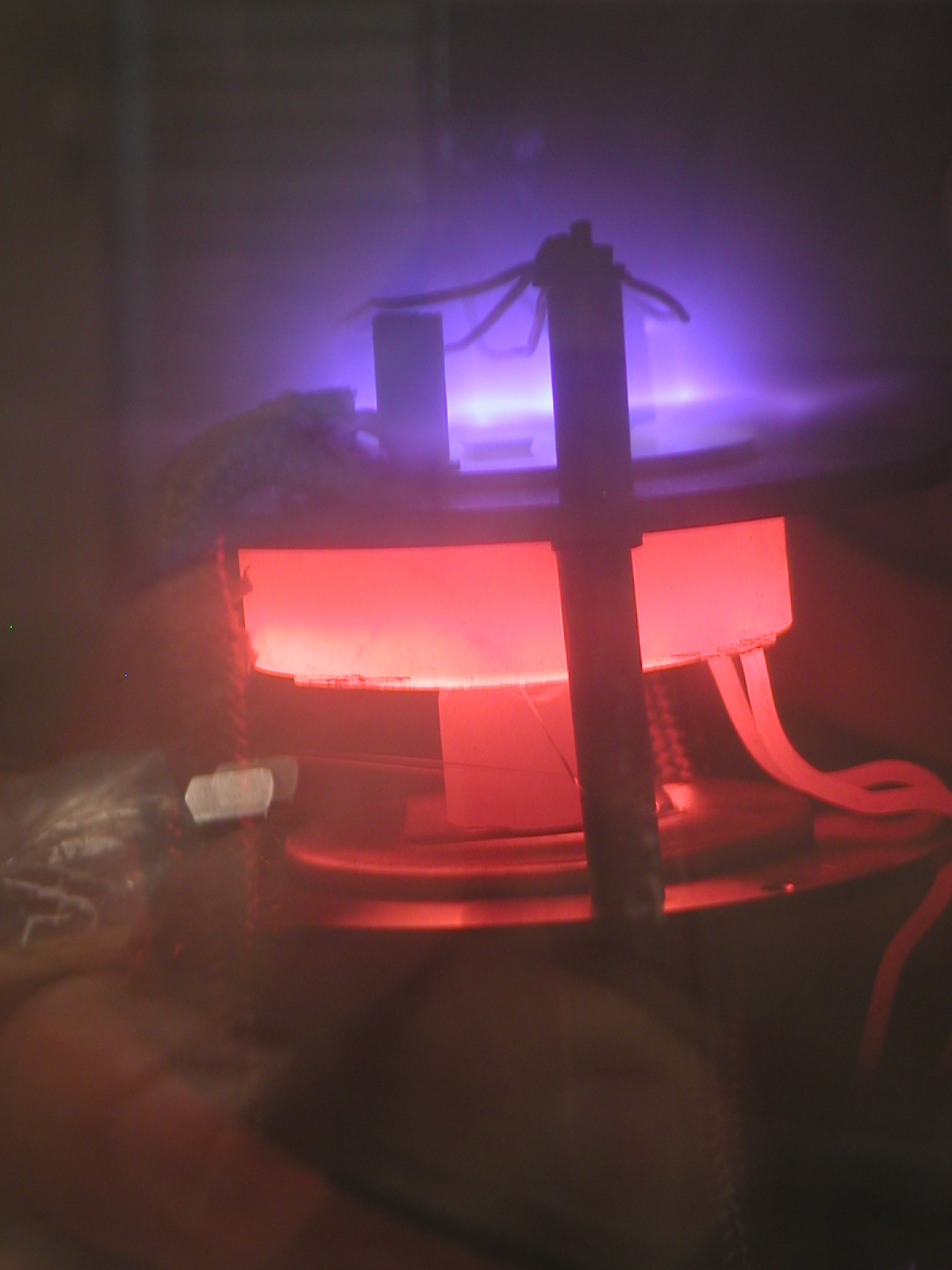In the modern jewelry market, there are a variety of treatments that diamonds undergo to enhance or change their appearance, as well as synthetically grown diamonds, and diamond simulants.

Laser drilling and fracture filling are among the most common of diamond enhancements. Laser drilling refers to the use of a very small, precise laser beam to bore holes into a diamond to reach its inclusions. The diamond is then soaked in sulfuric acid which enters the drill holes and removes or alleviates the appearance of impurities. Often, the diamond is then fracture filled, which involves filling the drill holes, along with other chips or fractures, with special glass that imitates the optical properties of diamond.

There are also treatments that affect the color of a diamond. “Fancy” diamonds refer to diamonds that are colored due to radiation or other minerals present in stone. Some of these colors are achievable by exposing a diamond to artificial radiation. In addition, the recent development of High Pressure High Temperature (HPHT) treatments for diamonds makes it possible to remove some of the color from a diamond, making them it appear more colorless.
In addition to diamond enhancements, there are synthetically created diamonds as well as diamond simulants. Using a modern process called Chemical Vapor Deposition (CVD), carbon atoms in a gas chamber can be made to crystallize onto a small diamond seed crystal. Currently, synthetic diamonds account for a very small portion of the total diamond market, and require professional evaluation to detect. Cubic Zirconia, a man-made synthetic crystal, has been the most popular diamond stimulant in recent decades, due to its relative hardness, diamond-like optical properties, and cost effective means of production. In recent years, Moissanite, also known as silicon carbide, has also become a popular diamond alternative, since it is superior to cubic zirconia in terms of hardness and appearance. Moissanite has only become commercially viable in the jewelry market within the last 15 years, and still is costly compared to other stimulants.

To the naked eye and the untrained individual, many of these treatments are extremely difficult to detect. There are varying opinions on how these diamonds are to be assessed, regardless it is widely agreed that jewelers and diamond brokers make this information as available as possible to allow consumers to make the best possible decision according to their desire and or budget.
for more info, check out our custom diamond page!

